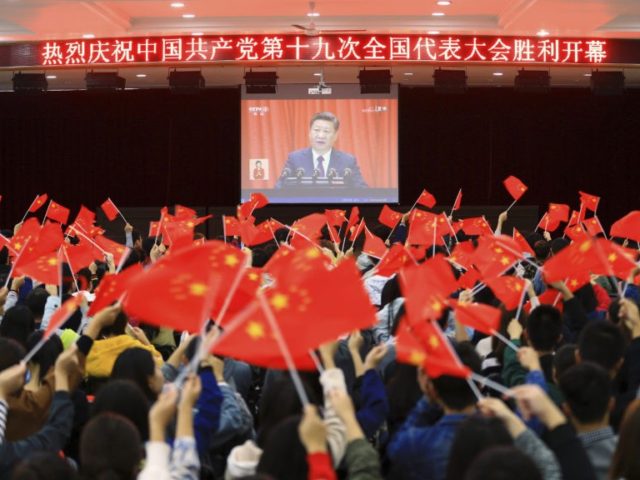According to research from the Center for Economics and Business Research in London, China will overtake the United States as the world’s largest economy by 2032.
“In 2032, three of the four largest economies will be Asian – China, India, and Japan,” Bloomberg News points out, citing CEBR’s research.
India will pass the United Kingdom and France next year, and will pass Germany by 2027. South Korea and Indonesia will knock G7 nations Italy and Canada out of the Top Ten list by 2032.
Writing at Bloomberg View in October, Noah Smith argued that China has already surpassed the United States economically and is “pulling away.” He based this argument on China’s superior manufacturing output and the “purchasing power parity” adjustment, which essentially argues that China’s Gross Domestic Product is “systematically undercounted” because as a developing nation it has much lower prices for many of its goods.
Using PPP adjustments, the International Monetary Fund calculated this year that China has replaced the United States as world’s largest economy, the first time the United States has been bumped from the top spot since it overtook the United Kingdom in 1872. China’s economy is worth $17.6 trillion according to the IMF, while the U.S. is worth $17.4 trillion.
Smith suggests the much lower standard of living for China’s much larger population is a deficiency it can correct with relative ease, now that it has accumulated such enormous total economic power.
Tim Worstall at Forbes makes the opposite argument, advising Americans and Europeans not to worry too much about statistical legerdemain that paints China as the top world economy in terms of collective output because the individual standard of living is the ultimate measure of economic success:
For what determines how well people live (and yes, aiding people in living well is pretty much the point of this whole having an economy thing) is economic output per capita. That total economy divided by the number of people who get to consume the output. Here the US is well ahead (north of $50,000 a year in the US, only just over $5,000 a year in China and yes, that is after adjusting for price differences) and China would need another three generations of breakneck growth to close that gap.
There are those who worry that economic size equates to political or even military power. And there’s something to that but again not much. For that sort of power depends upon how much you can tax off those people in order to pay for that military power. And clearly, the richer people are the more there is to tax them before you push them back down into subsistence again. If it really came down to it, properly mano a mano, the US could mobilise a much larger portion of its economy for such purposes than a poorer country could.
It’s entirely true that, on a PPP basis (that is, accounting for price differences), China’s economy is now marginally larger than that of the US. But it doesn’t actually matter very much at all.
A similar point was made in the BBC’s analysis of the Chinese economy, which argued that China’s vast population makes its total economic output disappointing, not impressive. Matthew Crabbe, the author of Myth-Busting China’s Numbers, pointed out to the Beeb that China’s average per capita spending power remains about a fifth of what U.S. citizens enjoy, and lags behind the likes of Turkmenistan and Suriname.
Also, Crabbe noted China’s economic data is notoriously unreliable due to local corruption and systemic flaws in the central government’s data-gathering techniques, to say nothing of Beijing’s willingness to cook the books.
The rubber of China’s fanciful economic reports may hit the road of hard economic reality if China’s debt crisis explodes, a possibility the International Monetary Fund warned about at the same time it was calculating China’s position as the top global economy.
“The system’s increasing complexity has sown financial stability risks. Credit growth has outpaced GDP growth, leading to a large credit overhang. The credit-to-GDP ratio is now about 25% above the long-term trend, very high by international standards and consistent with a high probability of financial distress,” the IMF warned.
“As a result, corporate debt has reached 165% of GDP, and household debt, while still low, has risen by 15 percentage points of GDP over the past five years and is increasingly linked to asset-price speculation. The buildup of credit in traditional sectors has gone hand-in-hand with a slowdown of productivity growth and pressures on asset quality,” added the IMF, judging that a dangerous amount of debt was accumulated during China’s big push for increased Gross Domestic Product.
One of the dangers anticipated by the International Monetary Fund is that China is so desperate to paint a picture of stunning economic success and convince investors to put their money on the line that it won’t allow investors to suffer losses – a practice that virtually guarantees they will become more reckless. The resulting debt crisis could destabilize the economy of the entire world, which would make China not the top economy but the top economic menace.

COMMENTS
Please let us know if you're having issues with commenting.